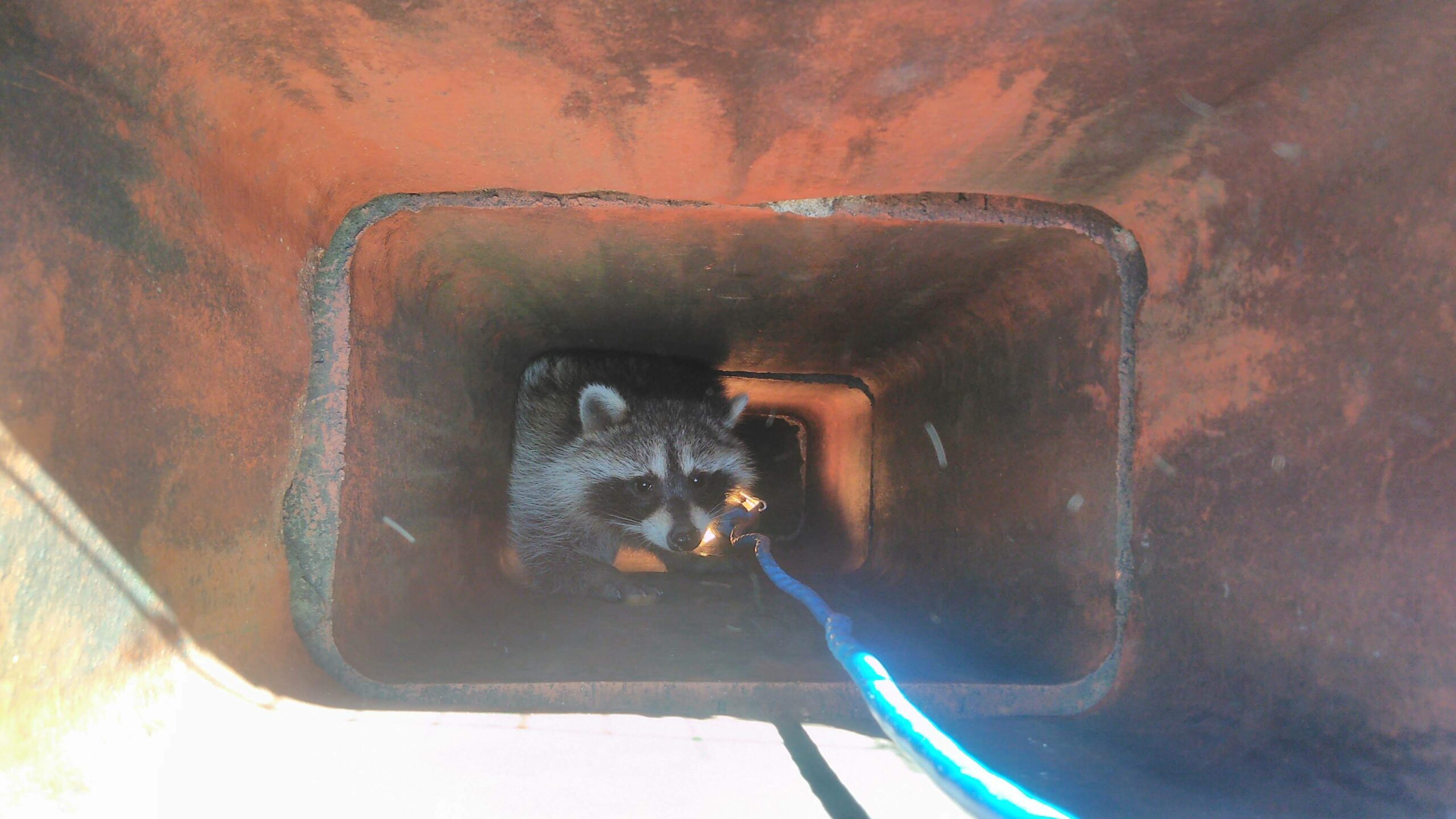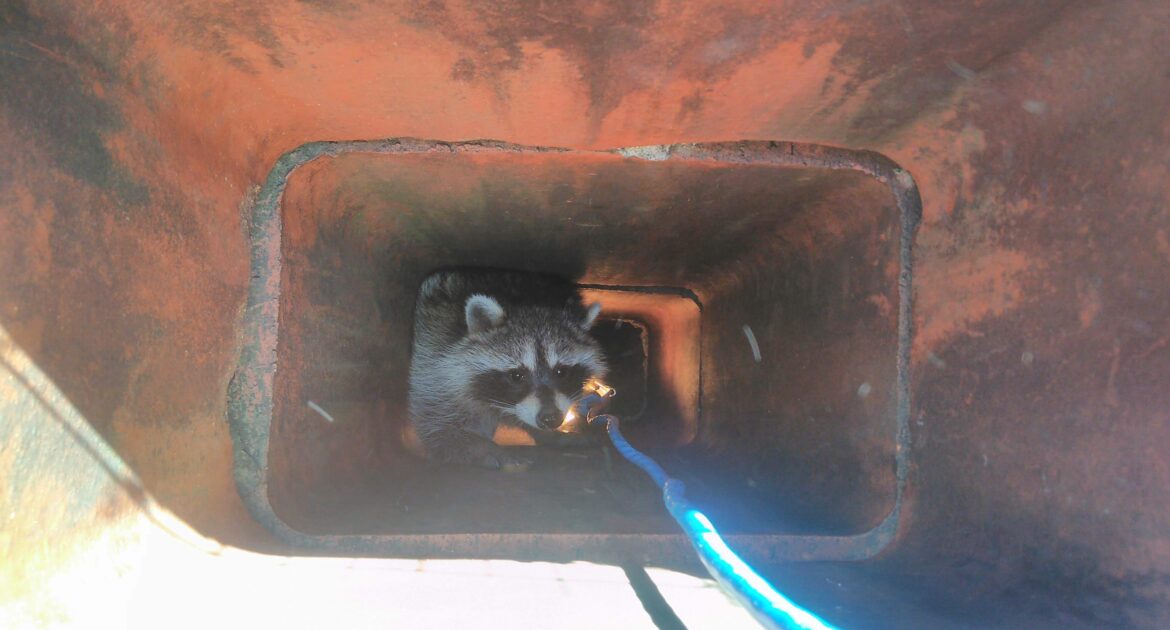When the sun sets and the world quiets down, raccoons come to life. These clever animals are nocturnal animals, meaning they’re most active during the night. While the rest of us sleep, they roam neighborhoods, looking for food, exploring backyards, and sometimes even sneaking into homes. For Minnesota homeowners, those strange nighttime noises you hear could be signs that raccoons are nearby. But what exactly are they up to?
Raccoons are busy during the night, and their activities can have a big impact on homes and properties. From scavenging in trash bins to climbing onto roofs, they’re experts at turning city or suburban spaces into their playgrounds. Understanding the nocturnal behavior of raccoons can help you protect your property and reduce unwanted visits.
In this blog, we’ll explore raccoon nighttime activities, how they affect your home, and the ways Skedaddle Humane Wildlife Control in Anoka County, Minnesota can help resolve issues safely and humanely.
Searching for Food in Neighborhoods
Food is priority number one for a raccoon at night. These adaptable animals are skilled foragers, using their sharp claws, curious noses, and quick minds to locate a meal wherever they can find one. That often means targeting common spots near homes.
Raccoons don’t discriminate when it comes to food—garbage cans, compost bins, and even pet food bowls left outside are like treasure chests to them. They’ll paw through your trash, tip over bins, and make a messy feast out of what’s inside. Gardens and bird feeders are also prime targets, offering fresh vegetables or seeds as easy snacks.
If you wake up to a yard littered with trash or freshly dug-up garden beds, you can bet a raccoon got creative with their search for dinner. These nighttime scavenging habits are a big reason so many homeowners in Minnesota turn to reliable wildlife control for help.
The good news? Steps like securing trash bins and bringing pet food indoors at night can help minimize these unwanted visits.
Exploring and Establishing Territories
Raccoons are more than just scavengers—they’re territorial animals that stake their claim in an area. At night, they wander yards, alleyways, and wooded spaces, marking their chosen spots as their own. How do they do it? Through scent marking, scratch patterns, and even droppings.
If raccoons have decided your property makes a good home base, you might notice scratch marks on your trees or fences. Droppings may appear in regular spots, and some homeowners report unusual, musky odors near garbage bags or entryways—strong signs that these animals are marking their territory.
A heavy raccoon presence in your yard could mean they’ve decided it’s part of their patch. While it’s fascinating to see wildlife claiming space, it’s not something most homeowners would consider ideal. Once a raccoon starts marking territory, they’re likely to return again and again.
Taking proactive steps to discourage this behavior can go a long way, like fixing entry points and keeping an eye on areas near trash storage.
Finding Shelter in Attics, Chimneys, and Crawl Spaces
Nighttime isn’t just about food and territory—it’s also when raccoons look for shelter. These animals are resourceful, using their natural climbing skills to scout for warm, dark spaces to rest or raise their young. Unfortunately, that often means attics, chimneys, and crawl spaces are their favorite go-to spots.
Raccoons are surprisingly good at identifying weak points in homes. Uncapped chimneys, roof gaps, loose vents, or open spaces under decks can quickly become their way in. Once inside, they’ll create a nest using materials like insulation or leaves. If a raccoon finds your property inviting, they might settle in long-term, turning your attic into a nursery for their young.
When raccoons get comfortable in your home, it’s more than just noisy. They can cause structural damage and even leave droppings that create health risks. Keeping your home secure with proper maintenance and sealing gaps can help stop them from nesting indoors.
Communicating with Other Raccoons
Did you know raccoons are quite chatty? While you may not see them, you might hear them at night. These animals have distinct ways of communicating with one another, using a range of noises to express themselves.
If raccoons are on your property, you might hear chattering or growling sounds. These noises typically happen when there’s competition over food or space. Baby raccoons are also pretty vocal, using high-pitched cries to call their mothers. And if raccoons have made their way into your attic or walls, you might pick up on thumping or scratching sounds as they move around.
These sounds can be a clear sign that raccoons are nearby or even inside your home. Recognizing these noises early can help you pinpoint the source of the problem and take action.
Climbing and Traveling Across Roofs and Trees
Raccoons are expert climbers, and they show off these skills most at night. Using their agility, they can easily scale fences, trees, and roofs, seamlessly navigating between urban and suburban areas. They’re also fearless when it comes to heights, often using power lines or high ledges as pathways.
For homeowners, this climbing behavior can lead to big headaches. Raccoons climb onto roofs to look for weak entry points. They’ll use tree branches to get close to the attic or chimney, and fences may end up as their highway from one property to the next. If you’ve noticed broken roof shingles or damaged screens, these skilled climbers might be to blame.
Stopping raccoons from scaling your home requires a little planning. Trimming tree branches near your roof and keeping an eye out for damage can help reduce their climbing opportunities.
Humane Raccoon Prevention Methods
Dealing with nighttime raccoons doesn’t have to be overwhelming. There are plenty of humane, safe steps you can take to discourage their presence while protecting your property. Here’s how you can make your space less appealing to these clever animals:
- Secure Your Garbage Bins: Raccoons love to explore trash bins, so make sure yours have tight-fitting lids. Consider using bungee cords or animal-proof containers for an added layer of security.
- Bring in Pet Food and Birdseed: Leaving pet food bowls or bird feeders outside at night is a big temptation for raccoons. Store these items indoors, or only leave them out during the day to avoid unwanted attention.
- Trim Tree Branches: Raccoons often use tree branches as ladders to access roofs and chimneys. Trimming back any limbs that are too close to your home can help discourage their climbing.
- Seal Entry Points: Inspect your home for potential entry spots. This includes uncapped chimneys, roof gaps, and open vents. Use wire mesh or other materials to block off these areas.
- Install Motion-Activated Lights: Bright light is something most raccoons don’t enjoy. Installing motion-activated lights around your yard or near potential entry points can keep them away.
Making these adjustments is a great way to prevent raccoons from turning your property into their playground. They’re simple fixes that can help protect your home without causing harm to wildlife.
Protect Your Home Without the Hassle
Raccoons may be fascinating animals, but their nighttime activities can cause headaches for homeowners. From property damage to annoying noises and even health risks, their behavior isn’t something you want to ignore. If you’ve noticed signs of raccoons around your home, it’s essential to act quickly and effectively.
Skedaddle Humane Wildlife Control specializes in providing safe and humane solutions for wildlife removal in Anoka County, Minnesota, helping you reclaim your home without harm to the animals. Don’t wait for the problems to grow—contact us today to request a quote and learn more about our expert wildlife services. We’re here to help you rest easy, knowing your property is protected.




